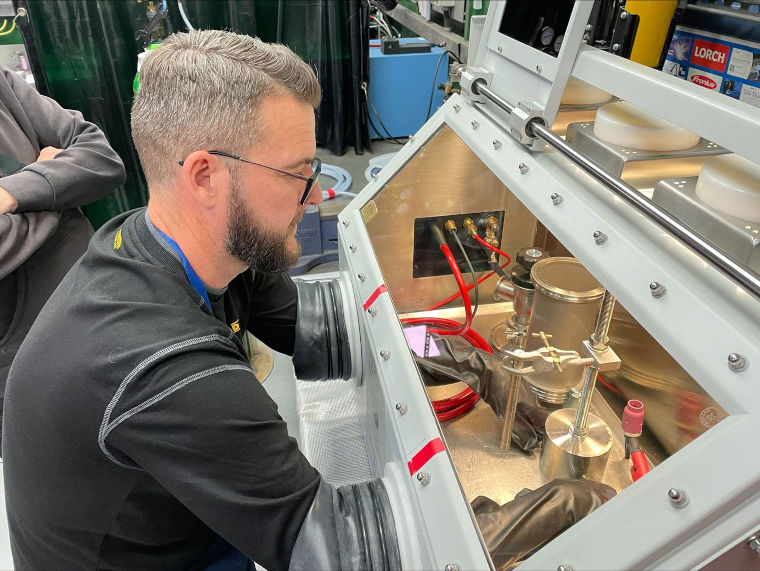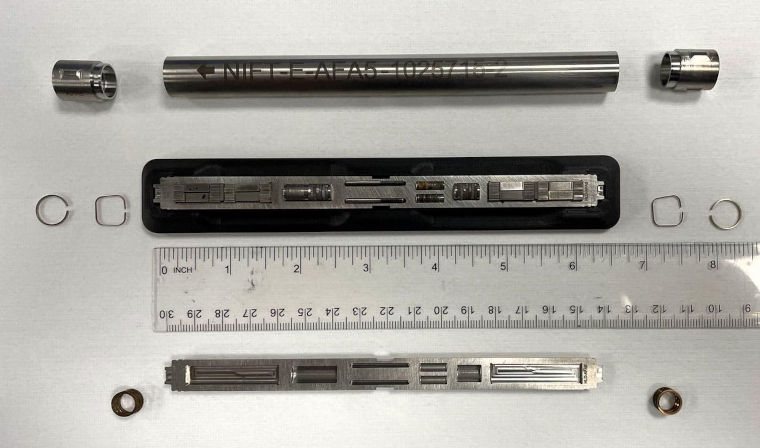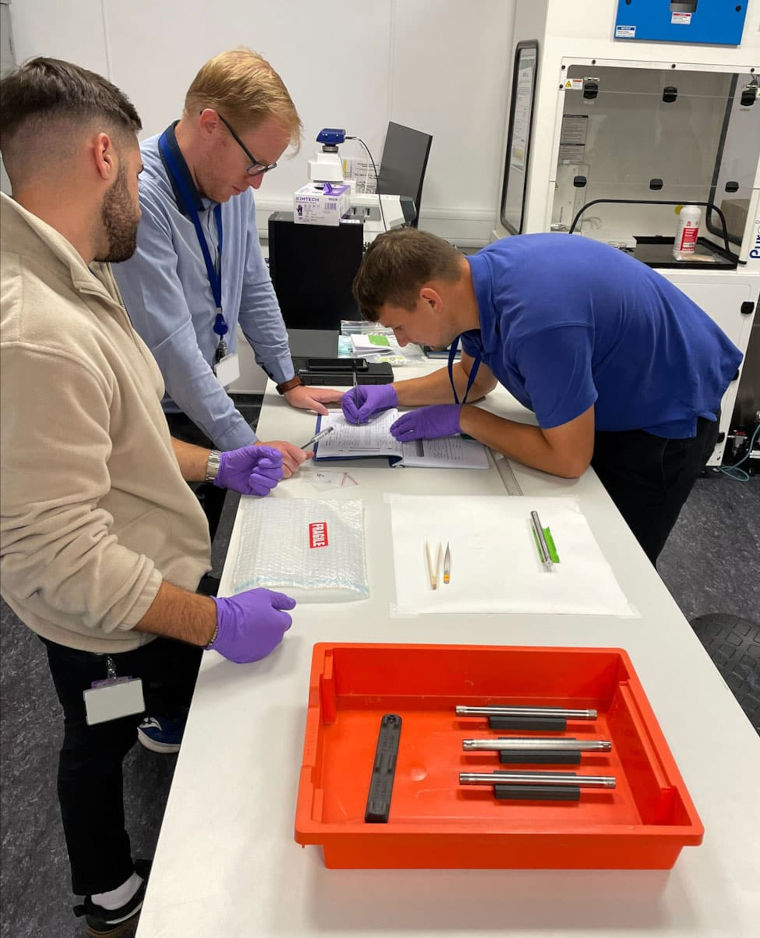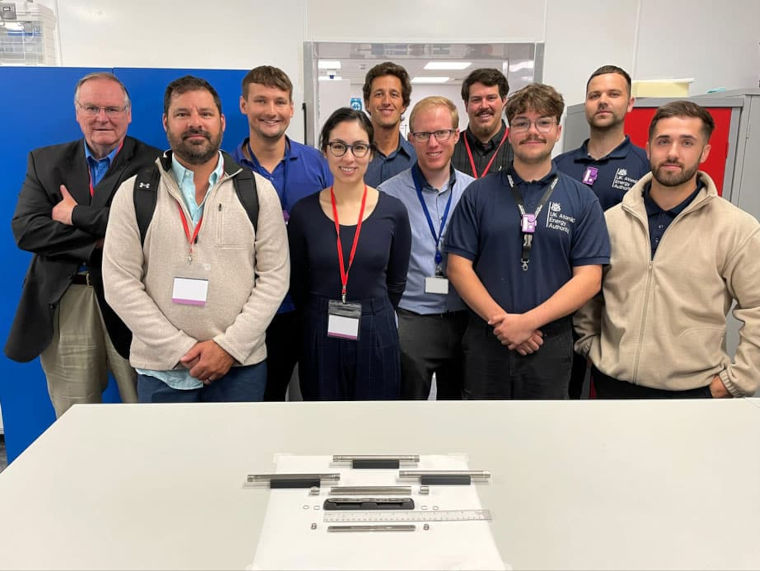Collaboration across borders: fabrication of testing capsules for NIFT‑E
UKAEA fabricated and assembled 8 NIFT-E test capsules—636 material specimens across 18 types—for INL irradiation testing.
The UK Atomic Energy Authority (UKAEA) has partnered with Idaho National Laboratory (INL), to jointly lead the NIFT-E (Neutron Irradiation as a Function of Temperature – Experiment) project, advancing the boundaries of materials testing. This collaboration is the first joint experiment under the US-UK Nuclear Energy R&D Cooperative Action Plan between the US Nuclear Science User Facilities (NSUF) and the UK National Nuclear User Facility (NNUF), a first-of-a-kind project for the UKAEA and the UK. The NIFT-E project is a significant milestone for both nations, demonstrating the strength of their research partnership and advancing technology by testing new materials in extreme environments.

Key Highlights:
Project overview
The NIFT-E project involved the fabrication and assembly of eight highly specialised irradiation testing capsules by UKAEA’s engineering group. The capsules are designed to assess the performance of materials under varying conditions of temperature and displacement per atom (DPA) within the Advanced Test Reactor (ATR) at INL. They contain 636 specimens of 18 different material types—such as additively manufactured steels, high entropy alloys, and alumina-forming austenitic alloys — and aim to expand the knowledge base for materials in advanced reactor environments. INL managed the design and analysis of the capsules, while UKAEA oversaw fabrication and assembly, ensuring every specimen was meticulously aligned and sealed for irradiation testing.

Each capsule was designed to address specific programmatic objectives, including varying temperatures and material conditions to simulate real-world reactor scenarios.
Matthew Arrowood, the NIFT-E Irradiation Experiment Manager, described the scope, noting, “This experiment was incredibly complex, with over 800 components to track, fabricate, and quality assure across different countries and research institutions.”
Key contributions by UKAEA’s integrated engineering group:
- Custom fabrication and assembly: UKAEA was tasked with fabricating the test capsules and ensuring their assembly adhered to stringent quality requirements. Their role included machining custom specimen fixtures, welding end caps, and sealing the capsules with specific gases for irradiation. Each capsule was filled with different gases to test materials under unique conditions, ensuring that the programmatic objectives could be met.
- Comprehensive quality assurance: The project required rigorous adherence to quality standards, with UKAEA overseeing the tracking, certification, and dimensional checks for over 800 components. Arrowood emphasised the importance of UKAEA’s attention to detail: “The complexity of the capsules and the quantity of specimens were already a challenge. When you add the logistics of multiple collaborators providing materials from all over the world, it becomes that much more vital for a robust quality program. UKAEA delivered at the level needed for a national test reactor.”The two As Built Data Packages (ABDP) authored by UKAEA, comprising over 1,000 pages, meticulously documented the material certifications, weld qualifications, and assembly procedures to ensure every detail met INL’s standards.
- Project management and logistics: With 25 collaborators across 10 organisations from both the US and UK, effective project management was essential. UKAEA, in conjunction with INL, led the weekly hardware fabrication meetings, coordinating the international effort to track, fabricate, inspect, and assemble the components. Arrowood commented on the strength of the collaboration, saying, “There were several challenges that could have derailed the project, but the type of team members we had ensured everything stayed on track, especially with UKAEA at the forefront of fabrication and assembly.”

Achievements
In September 2024, UKAEA successfully delivered the eight assembled NIFT-E capsules to INL. Following thorough inspections, the capsules were certified and configured for irradiation, scheduled to begin in November 2024.
INL’s response to UKAEA’s contribution:
Matthew Arrowood said: “We were very pleased with all UKAEA employees that we interfaced with, especially the core UKAEA members of the NIFT-E project. The hospitality, professionalism, and proactiveness demonstrated by UKAEA had a profound impact not only on the success of NIFT-E, but also on the working and personal relationships established with INL.”
As the lead organisation in manufacturing these critical components, UKAEA demonstrated its engineering expertise and ability to meet the exacting demands of international clients.
Sam Cullen, Lead mechanical engineer, Engineering group at UKAEA remarked: “We are proud to have delivered this project, ensuring that our client, INL, could move forward with their advanced material testing on schedule.”
The NIFT-E project is expected to run for 640 irradiation days, concluding in 2029, with the results contributing to both US and UK post-irradiation examination efforts. This long-term initiative will help form a foundation for future research and development in materials to be used in nuclear energy production.
Future collaboration
The success of the NIFT-E project underscored the value of strong international collaboration. Cullen reflected, “Working with INL was a fantastic opportunity, and we are excited about future collaborations. This project allowed us to showcase our technical expertise, and we’re already discussing additional opportunities to support INL in their innovative research efforts.”
Conclusion
The NIFT-E project sets a precedent for how international collaboration can drive advancements in energy research. UKAEA’s role in the fabrication, assembly, and delivery of critical testing components ensured the success of this high-stakes experiment. This collaboration highlights UKAEA’s ability to provide world-class engineering solutions to international clients, paving the way for further joint ventures with INL and other global research institutions. As INL and UKAEA look to the future, this partnership is poised to continue innovating and contributing to the safe and efficient advancement of reactor technologies.
